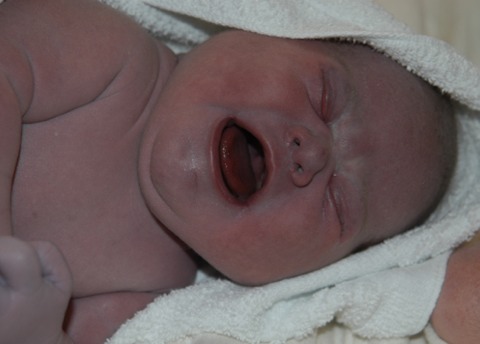Syndrome For Mac
- Mac Complex Infection
- Syndrome For Cold Hands And Feet
- Mac Lung Infection Treatment
- Mac Syndrome Definition
No active treatment for MAC lung disease within the past two years; Patients and their physicians must be willing to discontinue other non-MAC antimicrobials which may have been used as part of their pre-study bronchial hygiene program. Exclusion Criteria: History of Cystic Fibrosis or HIV disease. MAC usually causes problems after HIV becomes AIDS and your CD4 cell count gets lower than 50. You can prevent MAC by starting antiretroviral therapy (ART) early and not allow your CD4 count to get. Mycobacterium avium complex (MAC) is widely distributed in the environment, and exposure to the organisms is common. However, while many persons are transiently colonized with MAC, disease due to MAC is rare. Persons with AIDS are particularly susceptible to MAC disease, and in such persons the organisms disseminate widely. Mycobacterium avium complex (MAC) causes disseminated disease in up to 40% of patients with advanced human immunodeficiency virus (HIV) disease in the United States. Public Health Service Task Force convened to address the prophylaxis and therapy of MAC recommends that patients with HIV infection and less than 100 CD4+ T-lymphocytes/uL.
WHAT IS MAC (MYCOBACTERIUM AVIUM COMPLEX) AND HOW IS IT DIAGNOSED AND TREATED?
- Formerly known as “atypical mycobacteria”, “atypical TB”, or “atypical AFB” and currently as “nontuberculous mycobacteria” or “NTM”. NTM includes all types or species of mycobacteria (including MAC) other than the germ of tuberculosis (TB).
- Related to Mycobacterium tuberculosis (Mtb) but it is not TB (tuberculosis).
- NTM includes a number of different species, but the most common one causing chronic lung disease is MAC.
- MAC is not spread person to person like Mtb. MAC is not contagious.
- MAC lung disease seen in HIV negative (non-AIDS) patients is a chronic lung infection and early-on is often misdiagnosed as chronic bronchitis or recurrent pneumonia.
- MAC Lung Disease is acquired from the environment (soil, air, natural waters, tap water, etc.)
- Scientists and physicians who have studied MAC believe people who develop MAC lung disease become infected because of a defect in the structure or function of their lungs (especially a disease called bronchiectasis) or in their immune systems.
- Damaged lung tissue can result from previous TB, heavy smoking, and a breathing tube disease called bronchiectasis.
- Bronchiectasis is a breathing tube (bronchial) disorder characterized by excessive mucus production, cough, and susceptibility to certain infections such as MAC or infection caused by bacteria such as Pseudomonas aeruginosa.
- Disease in men commonly relates to smoking while disease in women (non-smoking) usually relates to bronchiectasis.
- The average age of patients with MAC lung disease in men is 55 years and 67 years in women.
- Men are more likely to have cavitary MAC (holes in their lungs). Women are more likely to have non-cavitary, nodular MAC.
- Diagnosis of MAC lung disease usually requires:
- Medical history with records of symptoms:
- Cough, sputum production, shortness of breath
- Loss of appetite (anorexia is the medical term) weight loss
- Severe fatigue or tiredness with inability to perform daily tasks
- Rarely coughing up blood (hemoptysis is the medical term)
- Fever, night sweats
- Chest x-ray (a picture of your lungs internally)
- High resolution CT scan (HRCT) (similar to an x-ray but a more detailed picture)
- Sputum culture – several sputum cultures are usually performed. Your specimen coughed from your lungs is examined under a microscope (AFB smear) and also placed on special media to grow mycobacteria (AFB culture).
- Bronchoscopy – may be necessary in some cases (especially if you can not cough up sputum) but not all, and involves putting a tube down into your lungs to obtain specimens for culture.
TREATMENT OF MAC LUNG DISEASE REQUIRES A MULTI-DRUG REGIMEN (MORE THAN ONE DRUG).
- MAC is resistant to ordinary antibiotics.
- Combination of 3 drugs (all FDA approved)/dosages are based upon your clinical history, age, weight, and symptoms.
- Clarithromycin (Biaxin) or Azithromycin (Zithromax)
- Rifampin (Rifadin) or Rifabutin (Mycobutin)
- Ethambutol (Myambutol)
- The combination of medicines is given until no more MAC germs can be grown by culture of your sputum for 1 year. Average treatment period is about 15-18 months.
- Monthly sputum cultures are performed while you are on therapy and periodically when you finish your therapy to be sure your MAC is gone.
- The 3-drug treatment may be given 3 times weekly (preferably Monday-Wednesday-Friday) or daily.
- Data from previous treatment trials tells us that most patients (approximately two-thirds) who have no previous treatment of their MAC and who can tolerate the appropriate medicines will get better and be “cured” of their MAC lung disease.
- Patients who have failed a prior drug regimen of > 6 months for their MAC are more likely to fail the standard drug regimen (almost 50%).
- Patients who take the 3-drug regimen for less than 1 year with negative cultures are more likely to relapse with disease with their same MAC strain.
- Patients who fail therapy after taking the 3 medicines are usually required to take additional medicines. Injectables which may be useful include:
- Streptomycin or Amikacin
- Amikacin can also be given by inhalation (aerosolized) and is less toxic when given in this manner.
- Monthly laboratory blood tests that include a complete blood count and comprehensive metabolic panel (CBC and CMP) to check for possible damage to blood cells, kidneys, and liver.
- Most common potential side effects/complications of medicines:
- Clarithromycin : Loss of appetite, diarrhea, nausea, abdominal pain, abnormal liver function tests (blood tests), bitter taste, mild allergic rash.
- Azithromycin : Diarrhea, nausea, abdominal pain, abnormal liver function tests (blood tests), decreased hearing, tinnitus (sounds in ears).
- Rifampin : Nausea, vomiting, liver damage, decreased platelets (cells which clot blood), body secretions (urine primarily) are orange/red.
- Rifabutin : Nausea, vomiting, decreased platelets, decreased white blood cells (cells that fight infection), eye pain (uveitis), diffuse muscle and joint aches, skin pigmentation (yellow).
- Ethambutol : Decrease in vision (especially color vision), blurriness.
- Streptomycin : Kidney damage, sounds in ears (tinnitus), hearing loss, poor balance, numbness, tingling, muscle damage, fever, headache.
- Amikacin : Kidney damage, tinnitus, hearing loss, poor balance.
If you experience these or other additional problems, you should discuss them with your physician. - Amikacin by inhalation (aerosolization) decreases toxicity to above adverse events.
Provide a list of your current medicines to your physician so he can determine any possible contra-indications.
PULMONARY FUNCTION TESTING
What is a pulmonary function test?
Pulmonary function testing is a way to measure your breathing capacity and, therefore is an objective measure of how well you are breathing. There are several types of breathing tests that can be done during pulmonary function testing including spirometry, lung volumes and diffusing capacity. A technician will explain what you need to do during each test and will coach you during the tests to help you give a good effort. All breathing tests require more than one measurement so that you will be asked to make more than one effort for each test. Spirometry is the most commonly performed breathing test. It requires you to take in as deep a breath as possible and then blow out the air in your lungs as forcefully and fully as possible. Spirometry, therefore, measures how much air you breathe in and out and how fast you breathe air in and out. Spirometry is frequently performed at baseline and then after you have inhaled a bronchial dilating drug (breathing medicine) to evaluate the effect of medication on your breathing function. As with all pulmonary function tests, it is very important that you make a maximal effort to insure accurate assessment of your breathing function. Lung volumes are performed while you are sitting in a small chamber called a plethysmograph (or body box) and provide further information about how much air you breathe in and out. You will be asked to perform different breathing techniques such as blowing into a tube while in the chamber. Lung volumes are usually not performed unless there are abnormalities found on spirometry. The diffusing capacity is one measure of how well your lungs move oxygen from the lungs into the blood. The results of pulmonary function testing can tell you and your doctor how much your lungs have been affected by a disease process and help determine if specific therapy can be of benefit to you. They can also be useful for evaluating the effects of a disease or treatment over time. You will be given specific instructions about what to do with your own breathing medications when the breathing tests are scheduled. Pulmonary function testing usually takes between ½ to 1 ½ hour to complete, depending on how many of the pulmonary function tests you are asked to complete.
Also see the http://www.uthct.edu website for further information including on how to arrange a clinic visit for expert consultation on MAC. Other centers that can also provide such consultation are found under the List of Treating Institutions.
Untreated patients with a nodular bronchiectatic form of Mycobacterium avium complex (MAC) suffer long deterioration in the long run despite their lack of symptoms, a new Korean study shows.
This suggests that patients with MAC lung disease should be better monitored to avoid irreversible lung damage.
The study, “Natural course of the nodular bronchiectatic form of Mycobacterium Avium complex lung disease: Long-term radiologic change without treatment,” appeared in the journal PLOS One.
Install The Sims 4 game and packs, and check if you need to update The Sims 4 base game before installing your pack.When you get new packs for The Sims 4, you can download and install your new content with the steps below. 
Non-tuberculous mycobacteria (NTM) are opportunistic and environmental pathogens. MAC is the most common NTM species, with the prevalence of NTM infection increasing in recent years from 1.4 to 6.6 per 100,000 people.
NTM infections mostly strike people with lung illnesses such as chronic obstructive pulmonary disease (COPD), bronchiectasis, cystic fibrosis, primary ciliary dyskinesia and alpha-1-antitrypsin disease. Individuals with no known lung disease can also be infected with these mycobacteria, in which case MAC infection could also cause bronchiectasis.
MAC lung diseases are mainly of two clinical forms: a fibrocavitary form and a nodular bronchiectatic (BE) form. This study focused on the nodular BE form.

The BE form usually occurs in middle-aged non-smoking women and tends to progress slowly over time. Most MAC patients start treatment when symptoms are more pronounced. When the infection becomes chronic, patients need ongoing treatment.

This study aimed to evaluate long-term radiologic changes in untreated MAC lung disease. Researchers analyzed serial chest computed tomography (CT) scans of patients with slow progressing nodular BE who had gone without treatment for at least four years.
Researchers examined patients treated at Seoul’s Chung-Ang University Hospital between 2005 and 2012. From the initial group of 104 patients with MAC lung disease, the study included 40 with non-treated nodular BE, with at least four-year interval chest CT scans. Among these patients, 82.5 percent were woman. After four years of follow-up, 15 of these 50 had to undergo treatment.
The authors evaluated each lung lobe on five major parenchymal abnormalities. The lung parenchyma is the functional part of the lung, including the alveoli and respiratory bronchioles.
The authors observed that 33 patients (82.5%) had increased CT scores for bronchiectasis, 28 patients (70.0%) for cellular bronchiolitis, 24 patients (60.0%) for cavities, 27 patients (67.5%) for consolidation, and 16 patients (40%) for nodules. Furthermore, disease progression was strongly associated with bronchiectasis and cavity features.
More importantly, 97.5 percent experienced a significant increase in CT score for all five parenchymal abnormalities during the study follow-up. Only one patient had no change in CT score.
The authors recognize that their study has several limitations such as small number of patients and a retrospective design — and that only initial and final CT data were analyzed.
“Despite these limitations, this study describes the long-term outcome of untreated MAC lung disease in stationary group,” the team wrote.


The results of this study showed that in these patients, even “minimal symptoms also lead to radiologic deterioration on chest CT during long-term follow-up period.” Because “simple chest PA could not detect bronchiectasis and small cavitary lesion,” the authors wrote that “careful CT monitoring with appropriate interval might be beneficial” for patients with minimal symptoms.
How useful was this post?
Click on a star to rate it!
Mac Complex Infection
Average rating 4.3 / 5. Vote count: 38
No votes so far! Be the first to rate this post.
We are sorry that this post was not useful for you!
Syndrome For Cold Hands And Feet

Mac Lung Infection Treatment
Let us improve this post!
Mac Syndrome Definition
Tell us how we can improve this post?